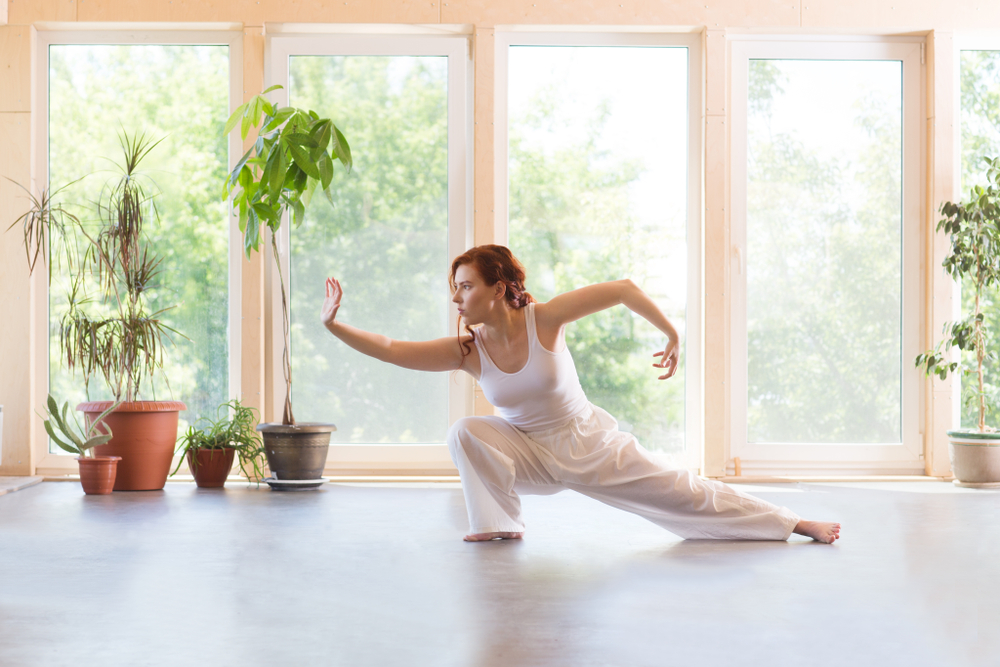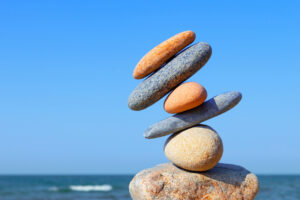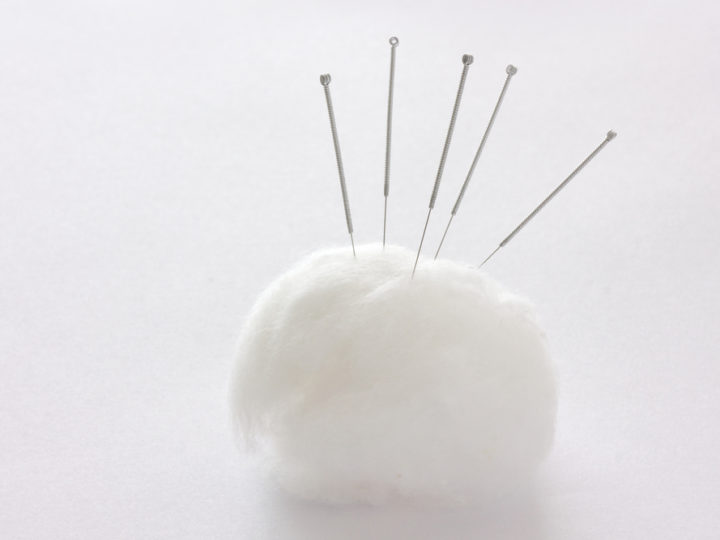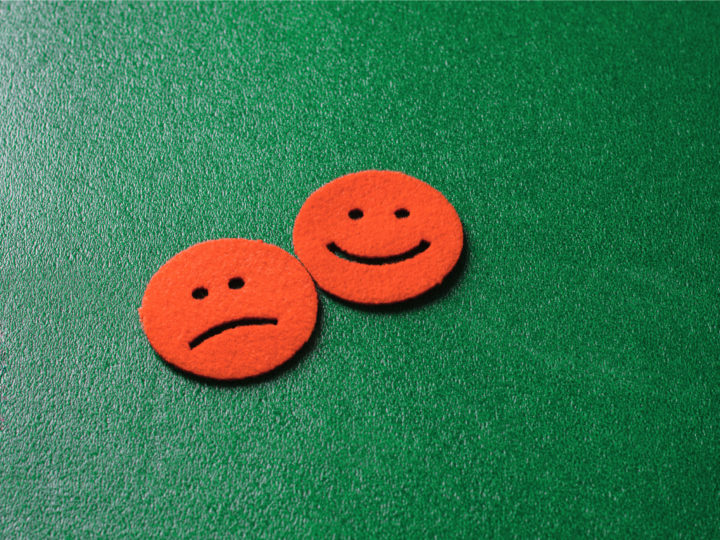WHY TAI CHI WILL BE THE NEXT YOGA
And How You Can Practice It, Too

When you think of Tai Chi, you probably think of a group of old people moving in slow motion in the park. At least that’s what most Westerners think of.
It wasn’t that long ago that yoga was thought of similarly. Reserved for those who were thought of as too weak to do other exercises, or for hippies, yoga used to not be taken seriously at all. But the times changes and the value of the practice proved itself and now everyone does yoga.
Tai Chi is poised to become a household name just the same.
The Chinese martial art of Tai Chi is very different from what many Americans think (and yes, it’s a martial art, like Kung Fu or Karate). It’s actually a form of meditation in motion that allows you to destress and empty your mind while making your body stronger. And it’s definitely not just for senior citizens.
As people wise up to the many benefits of Tai Chi’s, it’s quickly gaining popularity in the West. Read on to learn more about the history and philosophy of Tai Chi, what benefits you’ll get from practicing this martial art, and how to get started on your Tai Chi journey.
Tai Chi Basics: What You Need To Know
What Is Tai Chi And Where Did It Come From?
 In some ways, Tai Chi defies simple description. It is a martial art, a form of physical exercise, and an opportunity to meditate and focus on your breath all at the same time. It’s a little bit like yoga, in that respect.
In some ways, Tai Chi defies simple description. It is a martial art, a form of physical exercise, and an opportunity to meditate and focus on your breath all at the same time. It’s a little bit like yoga, in that respect.
Unlike yoga, there’s competitive points-based Tai Chi, performative Tai Chi, and non-competitive Tai Chi.
Tai Chi is all about slow, focused movements paired with thoughtful breathing and meditation. Tai Chi is meant to be flowing and graceful, without any pauses in between movements and poses. When you’re practicing Tai Chi, your body will be in constant motion but your mind should mostly be at rest.
There are also different styles of Tai Chi. The most popular ones are Chen, Yang, and Wu. Each style of Tai Chi emphasizes different principles and methods. Some focus on the martial arts aspect, while others are more about keeping both your body and mind healthy.
Tai Chi and Chinese Philosophy
 Before you can really understand Tai Chi, you need to know a little bit about where it came from.
Before you can really understand Tai Chi, you need to know a little bit about where it came from.
Tai Chi originated in ancient China and was inspired by the philosophical religion of Taoism, which has been practiced for more than 2000 years.
Taoists believe that there are two primary forces in the world–yin and yang. Yin is thought to be dark and passive, while yang is bright and active. The point of both Taosim and Tai Chi is to achieve balance between these opposing yet intertwined forces of yin and yang.
Now let’s fast forward to the invention of Tai Chi. The legend goes that, in the 12th century, a Taoist monk named Zhang Sanfeng witnessed a fight between a crane and snake. He thought this fight perfectly captured the tensions between yin and yang, and was inspired to create Tai Chi.
However, we don’t have any historical record to back up this legend. Instead, most credit Chen Wangting, a general in the Ming army. He drew on his military training, Taoist principles, and Chinese medicine to create Tai Chi in the 17th century. In some form or other, Tai Chi has been practiced ever since.
What Are Some of the Benefits of Tai Chi?
You might be thinking, “all of this is great, but why should I practice Tai Chi?”
Well, the reason Tai Chi has remained so popular throughout the centuries is because it provides the practitioner with countless benefits–both mental and physical. And this isn’t just based on hearsay or anecdotal evidence. Tai Chi has been studied extensively, even in the west, to identify all of its amazing benefits.
Here are just a few:
Get Stronger
 In the west, we tend to associate working out with hard, fast movements that isolate particular muscle groups. So you might not think that slow, smooth Tai Chi will do anything for your muscle strength.
In the west, we tend to associate working out with hard, fast movements that isolate particular muscle groups. So you might not think that slow, smooth Tai Chi will do anything for your muscle strength.
Well, you’d be wrong. Tai Chi is actually great exercise for both your upper and lower body. It engages your entire body, so you’ll reap plenty of physical benefits.
Many Tai Chi poses require unsupported arm stability which makes your upper body stronger. You’ll also engage your entire core and many of your leg muscles while you focus on balancing and slow movement.
Find Balance
 Tai Chi is all about balance–philosophically and physically. Its focus on balance trains both sensory receptors in our brains and stretch receptors in our muscles. Plus, by developing your muscle strength and flexibility, you’ll become more agile.
Tai Chi is all about balance–philosophically and physically. Its focus on balance trains both sensory receptors in our brains and stretch receptors in our muscles. Plus, by developing your muscle strength and flexibility, you’ll become more agile.
That’s why you usually see old folks practicing Tai Chi. By becoming better at balancing, they’re less likely to fall down and break a bone.
Be Happy
There’s evidence that Tai Chi can improve your mood, making you happier! Studies suggest that Tai Chi is “associated with improvements in psychological well-being including reduced stress, anxiety, depression and mood disturbance, and increased self-esteem.”
Though researchers have yet to pinpoint an exact reason for this, they speculate that it’s because of the physical benefits (like pain relief and better sleep) as well as the meditative, calming effects.
How Do You Start Practicing Tai Chi?
You might feel a bit intimidated by Tai Chi if you’ve never done it before. But because it’s a very safe form of exercise that doesn’t need any fancy equipment, it’s really easy to get started. Here’s how:
Check With Your Doctor
Lots of people start practicing Tai Chi to help them with physical ailments like Fibromyalgia, Alzheimers, or Parkinson’s Disease. Tai Chi is a great way to manage health problems like these, but it’s important to talk to your doctor about your plans before you start. Most likely, your physician will encourage you to try Tai Chi!

Observe First
In the US, many people have never even seen Tai Chi being practiced. To help you get an idea of what you’re getting yourself into, it’s a good idea to observe a class before you join. This will give you an idea of the teacher’s style, the class’s flow, and the vibe of the other students.
Talk to the sifu (teacher) beforehand to make sure they’re ok with it, though. And if you can, seek out a teacher who works with a martial arts studio or has lots of experience in Tai Chi. That’s how you’ll find the best, most knowledgeable sifu.
If there aren’t any Tai Chi classes being offered near you, you can always search for online classes and YouTube videos.
Dress Comfortably
Make sure to dress the part. When you’re practicing Tai Chi, you need to have a full range of motion. Any clothing that restricts you won’t work. Find something that’s comfortable and lightweight to keep you cool and free during your practice.
If you want to, you can practice Tai Chi barefoot. If that’s not your style, opt for a minimalist shoe that helps you balance while you can still feel the ground beneath your feet. Ditch the running shoes–they’re supposed to push you forward, which is not what you want here.
Just Do It!
It can be nerve wracking to try something new, so it’s ok if you’re nervous. But don’t let that stop you from getting into Tai Chi. There are so many amazing physical and mental benefits, and it’s spreading like wildfire throughout the US. Soon, it’ll be just as popular as yoga is and you’ll wish you started sooner!
Newer
Why Your Gut Impacts WAY More Than You Think
Older
How Are You Really? An Eastern Medicine Perspective
Comments (0)
Leave a reply
You must be logged in to post a comment.




